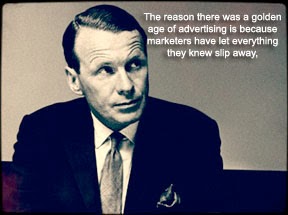During an organizational meeting last week, I asked several colleagues what they thought the biggest trend in public relations, advertising, and marketing might be. Their answers were expected.
Someone said mobile. Another said big data. And yet another tossed in content management for good measure. As I wrote down their answers, I considered some of my own, everything from versatile display surfaces to 3-D printing — conversation threads that have become standard for my students.
All in all, we came up with a solid list of trends but none of them felt too important. Maybe it's because the answers all sounded too easy. Six months ago, any of them could have been viable topics. But nowadays, they provide a distraction as much as direction. Most answers are based on actions.
Sure, every now and again, a marketer touts transactions over actions, but transactions have a limited shelf life too. Everyone is trying to measure everything based on multiples of the one-time something.
Actions are all about one time and they cost a lot.
The truth is that actions aren't moving anything forward. Transactions aren't much better. They're largely built around the same one-time sales cycle as if every prompt is a standalone metric — one piece of content times the number of impressions times a conversion percentage is a measurement.
That sounds great, but it's not efficient. And it isn't how anyone ought to be thinking as a marketer.
Instead of attempting to remind people to recycle every time they are about to toss a plastic bottle away, you want them to develop a long-term behavior so you don't have to be an ever-present reminder. Conversely, great campaigns results in long-term behavioral changes so people not only toss plastic bottles into recycling bins, but also actively seek them out by extending their threshold for convenience.
So maybe it's better to think less about systems of delivery (technology), single event triggers (response), and the minimum reach to generate an expressed conversion (reach) and think more about how you can change behavior so that your company is part of the equation much earlier in the decision making process. Some people might mistakenly assume I'm talking about brand loyalty alone, but the relationship is embedded before brand consideration, making loyalty an outcome.
The future of marketing isn't just technology. It's behavioral sciences.
Why? Simply put, behavioral sciences investigate the decision processes and communication strategies within and between organisms in their environment. It's all about how people think.
It's what will help researchers pinpoint the root of why cardio fitness is in decline among kids, why Jeremy Grantham remains bullish on stocks, and why graduate schools are seeing a decline in enrollment. It's how one application maker solved the psychological uncertainty problem associated with waiting for taxis (hat tip Mark Harai), which is one of Ogilvy Group UK Vice Chairman Rory Sutherland's favorite examples of applied behavioral sciences. In this case, eliminating the uncertainty angst increased taxi usage.
Consider this single solution against existing marketing models. Day in and day out, marketers propose more content, more often, and sometimes at a discount as the end all to their formula. But in reality: talking to more about taxis to more people, even with a discount, would have no measurable impact beyond shifting a few fares away from a competitor. The application Hailo, on the other hand, removed one of the largest decision-making obstacles to book a cab, increasing overall demand.
The more you understand your clients and customers' decision-making processes at the deepest level possible, the less likely you need to trick them with interruptions, link bait, or empty promises. What marketers can help organizations deliver on is a better product or service though psychology.
Ergo, the shoe company that understands why children run around less, the investor who pays attention to consumer confidence, the master's program that removes enrollment barriers will outperform those that rely on creative advertising, piles of whitepapers, or tuition waivers.
How about you? When was the last time your company or your client's company invested in empirical evidence over industry trends? And if they never have, maybe this is the first "why" that needs to be answered. Why are companies investing in persuasion tactics for short-term results over sound communication that leads to long-term behavioral shifts that require minor reinforcements?
Someone said mobile. Another said big data. And yet another tossed in content management for good measure. As I wrote down their answers, I considered some of my own, everything from versatile display surfaces to 3-D printing — conversation threads that have become standard for my students.
All in all, we came up with a solid list of trends but none of them felt too important. Maybe it's because the answers all sounded too easy. Six months ago, any of them could have been viable topics. But nowadays, they provide a distraction as much as direction. Most answers are based on actions.
Sure, every now and again, a marketer touts transactions over actions, but transactions have a limited shelf life too. Everyone is trying to measure everything based on multiples of the one-time something.
Actions are all about one time and they cost a lot.
The truth is that actions aren't moving anything forward. Transactions aren't much better. They're largely built around the same one-time sales cycle as if every prompt is a standalone metric — one piece of content times the number of impressions times a conversion percentage is a measurement.
That sounds great, but it's not efficient. And it isn't how anyone ought to be thinking as a marketer.
Instead of attempting to remind people to recycle every time they are about to toss a plastic bottle away, you want them to develop a long-term behavior so you don't have to be an ever-present reminder. Conversely, great campaigns results in long-term behavioral changes so people not only toss plastic bottles into recycling bins, but also actively seek them out by extending their threshold for convenience.
So maybe it's better to think less about systems of delivery (technology), single event triggers (response), and the minimum reach to generate an expressed conversion (reach) and think more about how you can change behavior so that your company is part of the equation much earlier in the decision making process. Some people might mistakenly assume I'm talking about brand loyalty alone, but the relationship is embedded before brand consideration, making loyalty an outcome.
The future of marketing isn't just technology. It's behavioral sciences.
Why? Simply put, behavioral sciences investigate the decision processes and communication strategies within and between organisms in their environment. It's all about how people think.
It's what will help researchers pinpoint the root of why cardio fitness is in decline among kids, why Jeremy Grantham remains bullish on stocks, and why graduate schools are seeing a decline in enrollment. It's how one application maker solved the psychological uncertainty problem associated with waiting for taxis (hat tip Mark Harai), which is one of Ogilvy Group UK Vice Chairman Rory Sutherland's favorite examples of applied behavioral sciences. In this case, eliminating the uncertainty angst increased taxi usage.
Consider this single solution against existing marketing models. Day in and day out, marketers propose more content, more often, and sometimes at a discount as the end all to their formula. But in reality: talking to more about taxis to more people, even with a discount, would have no measurable impact beyond shifting a few fares away from a competitor. The application Hailo, on the other hand, removed one of the largest decision-making obstacles to book a cab, increasing overall demand.
The more you understand your clients and customers' decision-making processes at the deepest level possible, the less likely you need to trick them with interruptions, link bait, or empty promises. What marketers can help organizations deliver on is a better product or service though psychology.
Ergo, the shoe company that understands why children run around less, the investor who pays attention to consumer confidence, the master's program that removes enrollment barriers will outperform those that rely on creative advertising, piles of whitepapers, or tuition waivers.
How about you? When was the last time your company or your client's company invested in empirical evidence over industry trends? And if they never have, maybe this is the first "why" that needs to be answered. Why are companies investing in persuasion tactics for short-term results over sound communication that leads to long-term behavioral shifts that require minor reinforcements?



































